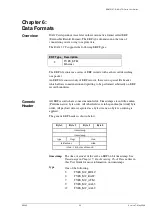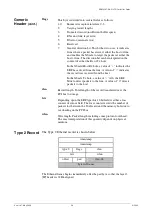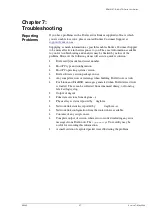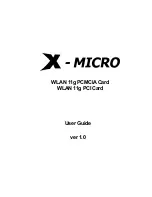
EDM01-07: DAG 3.7G Card User Guide
©2005
25
Version 7: May 2006
Chapter 6:
Data Formats
Overview
DAG Cards produce trace files in their own native format called ERF
(Extensible Record Format). The ERF type depends upon the type of
connection you are using to capture data.
The DAG 3.7T supports the following ERF Types:
ERF Type Description
2
TYPE_ETH:
Ethernet
The ERF file contains a series of ERF records with each record describing
one packet.
An ERF file consists only of ERF records, there is no special file header
which allows concatenation and splitting to be performed arbitrarily on ERF
record boundaries.
Generic
Header
All ERF records share some common fields. Timestamps are in little-endian
(Pentium native) byte order. All other fields are in big-endian [network] byte
order. All payload data is captured as a byte stream, no byte re-ordering is
applied.
The generic ERF header is shown below.
Byte 3
Byte 2
Byte 1
Byte 0
timestamp
timestamp
type
flags
rlen
lctr/colour
wlen
(rlen - 16) bytes of record
timestamp The time of arrival of the cell, an ERF 64-bit timestamp. See
Timestamps
in
Chapter 5: Synchronising Clock Time
earlier in
this User Guide for more information on timestamps.
type
One of the following:
5:
TYPE_MC_HDLC
6:
TYPE_MC_RAW
7:
TYPE_MC_ATM
9:
TYPE_MC_AAL5
12:
TYPE_MC_AAL2
Summary of Contents for DAG 3.7G Series
Page 1: ......
Page 4: ...EDM01 07 DAG 3 7G Card User Guide Version 7 May 2006 2005...
Page 18: ...EDM01 07 DAG 3 7G Card User Guide Version 7 May 2006 12 2005...
Page 30: ...EDM01 07 DAG 3 7G Card User Guide Version 7 May 2006 24 2005...
Page 34: ...EDM01 07 DAG 3 7G Card User Guide Version 7 May 2006 28 2005...




































